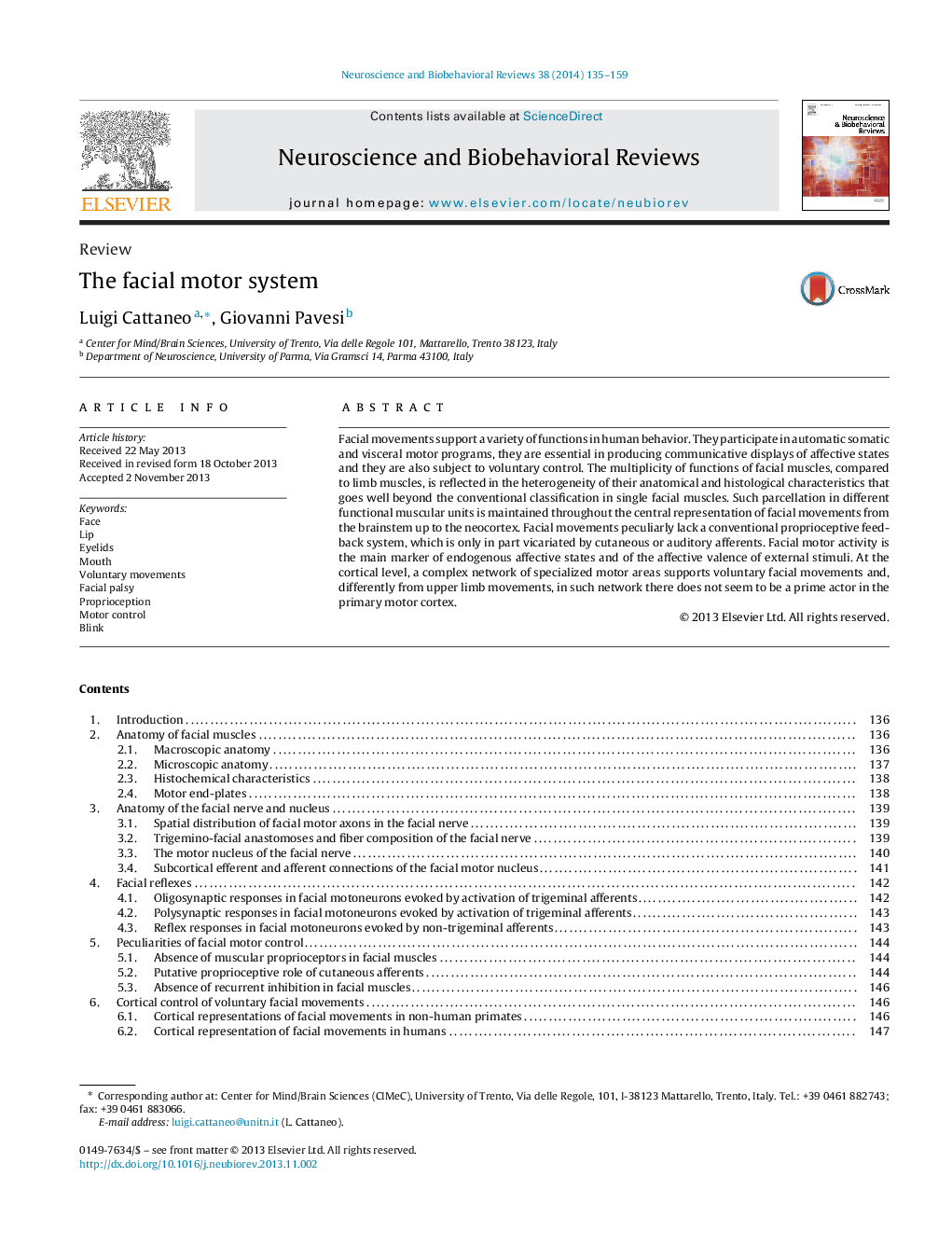| Article ID | Journal | Published Year | Pages | File Type |
|---|---|---|---|---|
| 937754 | Neuroscience & Biobehavioral Reviews | 2014 | 25 Pages |
•The facial motor system is different from the one controlling limb movements.•Facial muscles form anatomically and physiologically heterogeneous sub-groups.•Mimetic muscles lack a proper proprioceptive system and are outside visual control.•Voluntary facial movements rely on a mosaic of cortical motor areas.•Voluntary and automatic facial motor systems act in parallel with no cross-talk.
Facial movements support a variety of functions in human behavior. They participate in automatic somatic and visceral motor programs, they are essential in producing communicative displays of affective states and they are also subject to voluntary control. The multiplicity of functions of facial muscles, compared to limb muscles, is reflected in the heterogeneity of their anatomical and histological characteristics that goes well beyond the conventional classification in single facial muscles. Such parcellation in different functional muscular units is maintained throughout the central representation of facial movements from the brainstem up to the neocortex. Facial movements peculiarly lack a conventional proprioceptive feedback system, which is only in part vicariated by cutaneous or auditory afferents. Facial motor activity is the main marker of endogenous affective states and of the affective valence of external stimuli. At the cortical level, a complex network of specialized motor areas supports voluntary facial movements and, differently from upper limb movements, in such network there does not seem to be a prime actor in the primary motor cortex.
